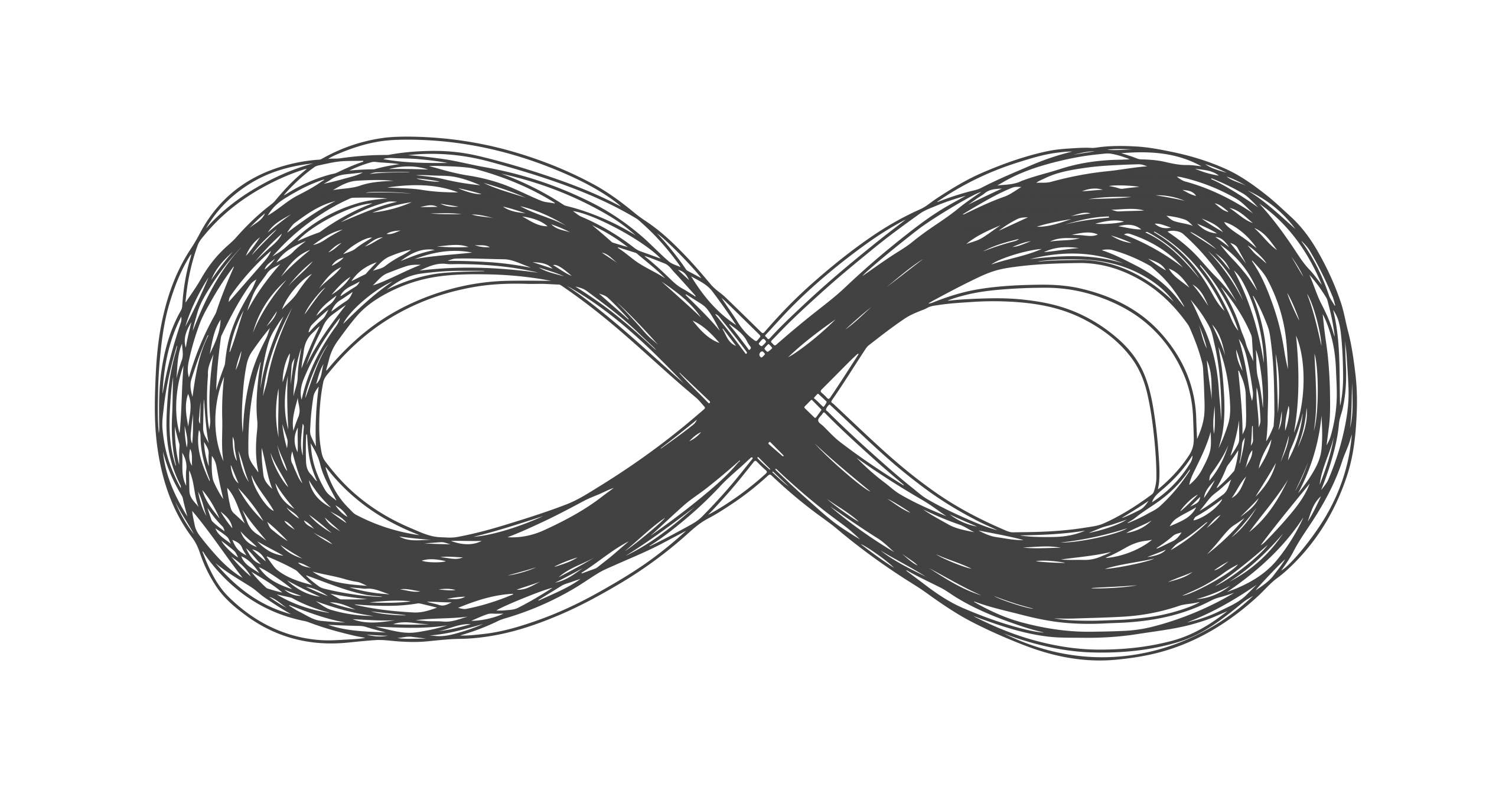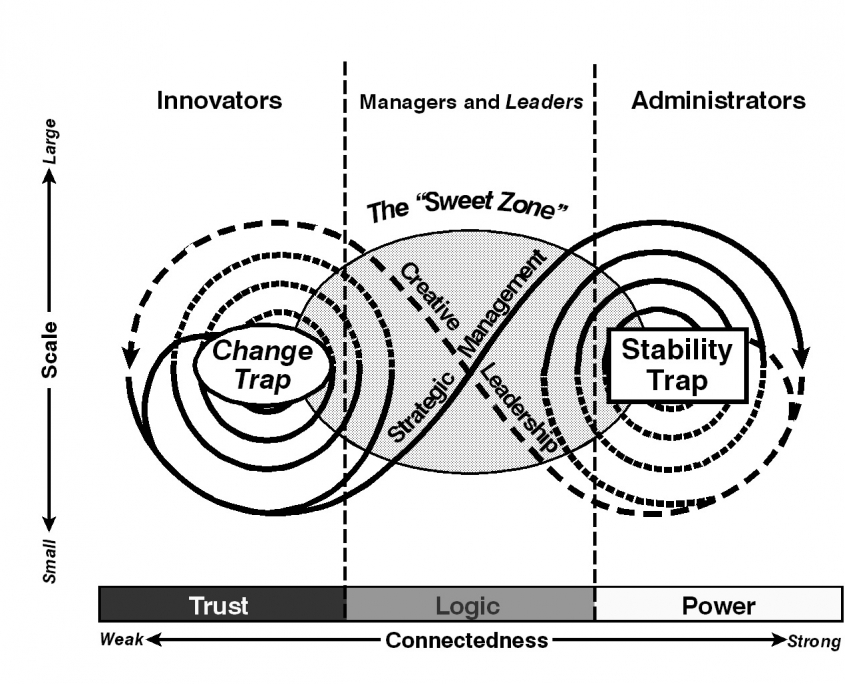*The lemniscate is most commonly known as the ‘infinity’ symbol: ∞
Origin
The lemniscate model originated in an ecological setting to understand the cycles of renewal and destruction in the environment. It was later developed to reflect organisational behaviour (Hurst, 2012).
This paper describes the lemniscate model within the organisational setting as presented by Hurst (2012), with additional information by Dr. Leoni Degenhardt (2014).
Description
The lemniscate represents the ongoing tensions between elements within a particular context: for example small vs large scale, innovation vs steady-state, trust vs power, or levels of connectedness.
We have used the model at Leadership Notebook in our leadership modules to describe the fluidity in different individual, team and organisational contexts, so that leaders better understand these ongoing tensions and can consciously aim to balance them.
Diagram 1:
The full eco-cycle, showing three contexts, two traps and the “Sweet Zone”
Key Elements of the Model
The “front” part of this loop (S-shaped solid line) represents the development of a system or initiative from:
- A small, loosely-connected community of trust (entrepreneurship) (bottom left of the diagram);
- Growth through the application of logic and goals-based action (strategic management); to
- Maturity in power as a large-scale, tightly-connected structure in steady state (top right).
At this point, as strengths become weaknesses in changing circumstances, the organisation may become embedded in bureaucracy and the status quo fears change and denies crises.
However, if the organisation uses crisis as an opportunity to clarify and to change direction, then it can renew via creative leadership. At this point, it enters the “back loop” of the eco-cycle (the dotted reversed-S-shaped line) and:
- Enters a period of confusion and lack of clarity, trying to understand “where to next”;
- Uses creative leadership (and values-based action) to help the group to see the vision of possibility;
- Pulls together and gives meaning to the change, including identifying a clear pathway forward.
Traps
Twin spiral “traps” exist at each end of the eco-cycle:
| change trap or entrepreneurial failure (left side) |
|
| success, competence or stability trap (right side) |
|
Falling into the traps and/or getting stuck into the middle of the process results in mediocrity.
Hurst (2012) suggests that these are usually the result of three connected causes:
- Confusion about the business purpose
- Poorly performing processes, or
- Dispirited people at each level of the organisation.
The Sweet Zone
The lemniscate pattern can occur at different levels: individual, team, organisation, community, etc., and different individuals or teams within an organisation can be at different places on the lemniscate at the same time.
Our ability to navigate the continually changing context in which we find ourselves reflects our ability to understand where a team (or individual) is placed and to balance the ongoing tensions at each level.
This is the Sweet Zone.
At an organisational level, success comes from learning how to balance discipline (embedded as virtuous habits or processes) and freedom (to innovate and create through small-scale experimentation).
Research has identified a number of tools within four categories (power, management, leadership and culture) that are available to managers and leaders to assist them in balancing these tensions inherent in teams and organisations (see original article by Hurst).
References:
Degenhardt, L. (2014). Adjunct Senior Lecturer, UNSW; presentation at Governance Leadership and Management conference, Canberra.
Hurst, D. (2012). The New Ecology of Leadership: Revisiting the Foundations of Management, Leadership, May/June
Link to original article by Hurst:




